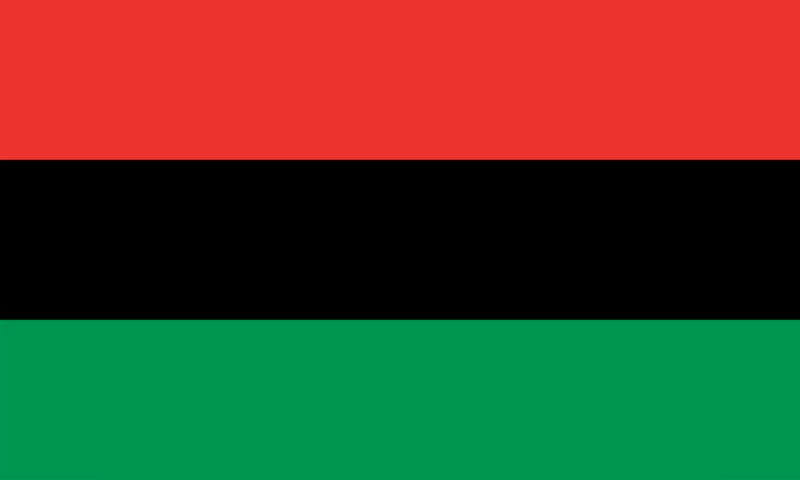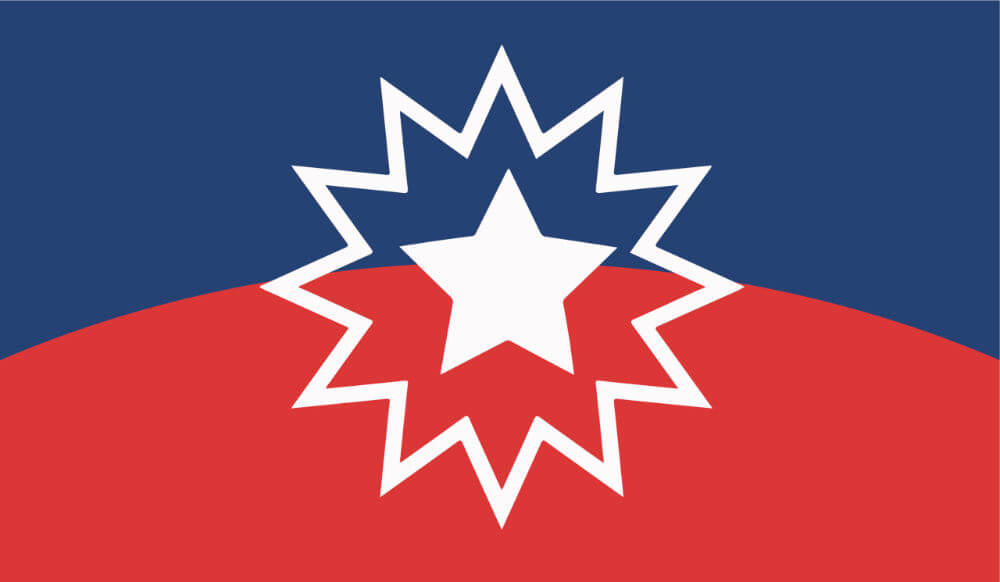
Commemorating Juneteenth
Understanding and Honoring Black History
About Juneteenth
On June 19, 1865, federal troops arrived in Galveston Texas to enforce the emancipation proclamation and declare that all enslaved people are now free. June nineteenth has become shortened to Juneteenth and represents Freedom Day for Black and African American peoples in the U.S.
When General Gordon Granger arrived in Galveston to enforce General Order Number 3, he read to the enslaved peoples of Texas...
The people of Texas are informed that in accordance with a Proclamation from the Executive of the United States, all slaves are free. This involves an absolute equality of rights and rights of property between former masters and slaves, and the connection heretofore existing between them becomes that between employer and hired laborer.
In 2021, 155 years later, Juneteenth was declared a national federal holiday.
Significance of June 19th
Why do we celebrate Freedom Day on June 19th instead of Emancipation Day?
Though the emancipation proclamation had been issued by Abraham Lincoln on September 22, 1862, with an effective date of January 1, 1863, the proclamation did not have an immediate effect for most enslaved people across the south. Many pass down stories about this two-and-a-half-year delay, some about a messenger who was killed on his way to spread the news of the Emancipation to Texas, others pass down that the proclamation was withheld until the end of the last cotton harvest. Regardless of the validity of these stories, freedom did not reach Texan slaves until 1865 despite most U.S. textbooks only bearing mention of the emancipation proclamation.
On June 19, 1865, federal troops arrived in Galveston Texas to enforce the emancipation proclamation and declare that all enslaved people are now free. June 19th has become shortened to Juneteenth and honors the end to slavery in the United States. It is considered the longest running African American holiday and, on this day, we celebrate freedom for all Americans.
How To Commemorate Juneteenth
We are used to fourth of July festivities and traditions that celebrate American Independence, but how do we celebrate Juneteenth, the day that commemorates freedom for all Americans through the emancipation of African American slaves?
Juneteenth, coined “Jubilee Day” began on June 19th, 1865, and quickly became an annual celebration. In its early observances, Juneteenth was celebrated through church gatherings alongside food festivals, baseball games, fishing, pageants, rodeos, and prayer breakfasts. Celebrations were also commemorated by annual pilgrimages to Galveston by formerly enslaved persons and their descendants.
African Americans were in most cases prohibited from using public facilities for their celebrations, so they were often held at churches or near water. However, Juneteenth celebrations reached new heights in 1872 when a group of African American ministers and businessmen purchased 10 acres of land in Houston to create the commemorative space contemporarily known as Emancipation Park. Because of the historical significance of emancipation park, and the traditional significance of having access to gathering spaces as African American people, celebrations at local public parks continue to be sacred on Freedom Day.
Throughout history, and today, descendants also dress their best on Juneteenth as an homage to their ancestors who were never afforded the respect to dress in ornate, decorated, or extravagant clothing during their enslavement. This celebratory practice has influenced Juneteenth pageants across the country.
Today, local celebrations often include barbecues and cookouts, drinking red drinks such as strawberry soda, public readings of the emancipation proclamation, singing traditional songs such as “Lift Every Voice and Sing”, and the reading of poems and works by prominent Black artists like Maya Angelou. Organizations across the country have now been dedicated to uplifting education and celebration surrounding Juneteenth resulting in annual parades, community celebrations, and increased awareness and education surrounding the significance of the holiday.
Join us in the commemoration of Juneteenth through these six actions:
- Learn the full history of Juneteenth
- Celebrate Black liberation, joy, pain, art, and humanity
- Support Black-owned businesses
- Acknowledge and spread the word
- Donate to supportive organizations
- Attend Juneteenth events
Consider visiting and supporting the following Black-owned restaurants and bars as part of your Juneteenth celebrations! Some of our favorites include:
- A Taste Of Louisiana
- Capital Cigar Lounge
- Grandpa’s Ribs
- Juju's Vegan Cajun & Creole Cuisine
- M&J’s Southern Style Food
- Mary Ellen’s
- Sarah’s Southern Comfort Foods
- Screamers Dining & Cabaret
- Stur 22 Lounge Caribbean & African Kitchen
- Tiru Ethiopian
- Unbewingable
- Symone’s Sweet Shop
For other Black-Owned businesses, nonprofits, medical providers and services in Lincoln, visit BlackOwned.in.
To donate, visit Lincoln’s NAACP branch.
Juneteenth History Timeline
September 22, 1862: Following the Civil War Abraham Lincoln signs the emancipation proclamation, declaring that all slaves in the United States are declared free effective January 1, 1863.
June 19, 1865: Union troops arrive in Galveston Texas to take control of the state and enforce the release and freedom of all slaves.
1890 – 1908: During the Jim Crow era, and in response to widespread disenfranchisement of Black and African American people, there was a massive decline in Juneteenth celebrations. This decline continued through the great depression from 1936-1951.
1872: Richard Allen, Richard Brock, Jack Yates, and Elias Dibble together buy 10 acres of land in Houston Texas and create Emancipation Park, a place for African Americans to gather and celebrate.
June 1936: The Texas state fair holds a large Juneteenth celebration, contributing to its revival, wherein the governor James V. Alfred issued a proclamation that Juneteenth shall be a date of observance for African American emancipation.
1960’s - 1980’s: Juneteenth celebrations were eclipsed by the determination to achieve civil rights, but in the 1970’s the country saw a revival of Juneteenth celebrations and observances.
January 1, 1980: Texas becomes the first state to make Juneteenth an official state holiday; several others followed suit over the years.
June 16, 2021: Congress passes a resolution establishing Juneteenth as a national federal holiday; President Biden signed this resolution into law on June 17, 2021.
The Fight for the Federal Holiday
Without the following trailblazers and advocates, we might not have reached the widespread recognition and observance of Juneteenth that we see today.
Texas representative and civil rights activist Al Edwards, often referred to as the Father of the Juneteenth Holiday, put forth the legislation that declared Juneteenth a Texas state holiday in 1980. After his dedicated fight, several other individual states followed suit.
Opal Lee, a resident of Fort Worth Texas, is known in her community as the Grandmother of Juneteenth. Over her more than 40 year career as a community activist she has made it her life’s mission to spread the word about Juneteenth. Lee has organized countless annual celebrations and activist efforts across the country on behalf of Juneteenth culminating in many trips to the U.S. capitol in an attempt to solidify Juneteenth as a paid U.S. holiday. Despite the long and difficult fight for a federal holiday, Opal Lee’s perseverance and dedication has culminated in a federal holiday and Lee continues to forward Juneteenth education across the country.
Lula Briggs Galloway, late president of the National Association of Juneteenth Lineage and author of “Juneteenth: Ring the Bell of Freedom,” was one of the first activists to put pressure on elected national leaders to commemorate Juneteenth. Her lobbying, particularly of Republican Senator Trent Lott, is remembered by many as a representation of the bipartisan importance of recognizing Juneteenth as a major event in U.S. history. In 2013, she was recognized by the U.S. Senate as one of the trailblazers who brought national recognition to the holiday.
Physician, minister, musician, and civil rights activist Rev. Ronald V. Myers was a lifetime Juneteenth advocate and is recognized as the founder of the National Juneteenth Observance Foundation.
Michigan Representative Barbara-Rose Collins was the first Black woman from Michigan to be elected to Congress and the first to introduce federal legislation to recognize “Juneteenth Independence Day” in 1997.
In 2021, Congresswoman Sheila Jackson Lee, with support of U.S. Senators John Cornyn and Ed Markey, introduced a bipartisan bill to recognize Juneteenth as a federal holiday. Her unwavering advocacy for Black and African American communities in the U.S. over many years has brought visibility to Juneteenth and its observance.
The Pan-African Flag
The Pan-African Flag, also known as the Afro-American Flag, The Black Liberation Flag, and various other names, was created in 1920 in response to “coon songs,” - a nineteenth century craze of songs that belittle and mocked African American people and customs.
One such song stated, “Every race has a flag but the coon...” In response, Marcus Garvey and members of the Universal Negro Improvement Association created the Pan African flag with the colors red, black, and green.
Red: represents the blood that unites all people of Black African ancestry, and that which has been shed for liberation.
Black: represents Black people whose existence as a nation, though not a nation-state, is affirmed by the existence of the flag.
Green: represents the abundant natural wealth of Africa.

The Juneteenth Flag
The Juneteenth Flag was created in 1997 by Ben Haith, the founder of the national Juneteenth Celebration Foundation, and other foundation collaborators. Their vision was brought to life by Illustrator Lisa Jeanne Graf, featuring red, blue, white and the characteristic star and burst:
The star: represents the lone star state as an homage to Galveston Texas and the enforcement of the emancipation proclamation by union soldiers on June 19, 1865. The star also represents the freedom of African Americans in all 50 states.
The burst: is inspired by a nova, an astronomist term for a new star. This represents a new beginning for African American people in the United States.
The arc: the curve across the middle of the flag represents a new horizon and the promise that lay ahead for Black people.
The colors: red, white, and blue represent the American flag, and act as a reminder that enslaved people and their descendants were, and are, undeniably Americans.

A Cultural Symbol of Juneteenth
Lift Every Voice and Sing
Written in 1900 by James Weldon Johnson and his brother J. Rosamond Johnson, Lift Every Voice and Sing is a hymn of prayer, faithfulness, and freedom for African American People. In 1917 the song was adopted by the NAACP as the “Black National Anthem.”
Lift every voice and sing,
’Til earth and heaven ring,
Ring with the harmonies of Liberty;
Let our rejoicing rise
High as the listening skies,
Let it resound loud as the rolling sea.
Sing a song full of the faith that the dark past has taught us,
Sing a song full of the hope that the present has brought us;
Facing the rising sun of our new day begun,
Let us march on ’til victory is won.
Stony the road we trod,
Bitter the chastening rod,
Felt in the days when hope unborn had died;
Yet with a steady beat,
Have not our weary feet
Come to the place for which our fathers died.
We have come over a way that with tears has been watered,
We have come, treading our path through the blood of the slaughtered,
Out from the gloomy past,
’Til now we stand at last
Where the white gleam of our bright star is cast.
God of our weary years,
God of our silent tears,
Thou who has brought us thus far on the way;
Thou who has by Thy might
Led us into the light,
Keep us forever in the path, we pray.
Lest our feet stray from the places, our God, where we met Thee,
Lest our hearts drunk with the wine of the world, we forget Thee;
Shadowed beneath Thy hand,
May we forever stand,
True to our God,
True to our native land.